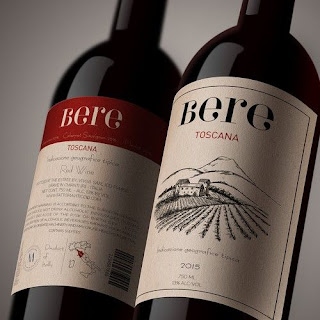How to Read an Italian Wine Label
Understanding Italian wine labels can be tricky. Here are key terms to help you decipher them:
- DOCG: Denominazione di Origine Controllata e Garantita, the top classification for Italian wines.
- DOC: Denominazione di Origine Controllata, one step below DOCG.
- IGT: Indicazione Geografica Tipica, allows winemakers more freedom in grape usage and winemaking styles.
- Riserva: Denotes a wine aged longer than usual.
- Superiore: Denotes a higher-quality designation.
- Classico: Denotes wines from a zone within a region considered the original area of production.
- Azienda Agricola: A farm or estate that produces its own grapes for the production of its wines.
- Annata or Vendemmia: A specific harvest or vintage.
- Produttore: Producer
- Tenuta: Estate
- Vigneto: Vineyard
Italian Wine Regions
- Valle d’Aosta: Nebbiolo (Cabernet Sauvignon)
- Common Italian-American Pairing: Nebbiolo with hearty tomato-based pasta dishes like spaghetti and meatballs.
- Piedmont: Nebbiolo (Pinot Noir)
- Common Italian-American Pairing: Barolo with rich, savory dishes like osso buco.
- Liguria: Vermentino, Pigato (Sauvignon Blanc)
- Common Italian-American Pairing: Vermentino with seafood pasta dishes like linguine alle vongole.
- Lombardy: Nebbiolo (Chardonnay)
- Common Italian-American Pairing: Franciacorta sparkling wine with antipasti.
- Trentino-Alto Adige: Pinot Nero, Schiava, Lagrein (Riesling)
- Common Italian-American Pairing: Lagrein with grilled sausages or pork chops.
- Veneto: Corvina, Molinara, Rondinella (Merlot)
- Common Italian-American Pairing: Valpolicella with pizza or pasta with red sauce.
- Friuli-Venezia Giulia: Friulano, Ribolla Gialla (Gewürztraminer)
- Common Italian-American Pairing: Friulano with prosciutto and melon.
- Emilia-Romagna: Lambrusco (Chenin Blanc)
- Common Italian-American Pairing: Lambrusco with charcuterie and cheese platters.
- Tuscany: Sangiovese (Cabernet Franc)
- Common Italian-American Pairing: Chianti with grilled steak or pasta with Bolognese sauce.
- Umbria: Sagrantino (Syrah)
- Common Italian-American Pairing: Sagrantino with aged cheeses or hearty stews.
- Marche: Montepulciano (Grenache)
- Common Italian-American Pairing: Montepulciano with spicy Italian sausages.
- Lazio: Cesanese (Viognier)
- Common Italian-American Pairing: Cesanese with roasted chicken or turkey.
- Abruzzo: Montepulciano (Malbec)
- Common Italian-American Pairing: Montepulciano with pasta dishes featuring rich tomato sauces.
- Molise: Montepulciano (Pinot Blanc)
- Common Italian-American Pairing: Montepulciano with seafood risotto.
- Campania: Aglianico (Zinfandel)
- Common Italian-American Pairing: Aglianico with spicy salami or pepperoni pizza.
- Basilicata: Aglianico (Carmenere)
- Common Italian-American Pairing: Aglianico with grilled lamb or beef dishes.
- Puglia: Primitivo, Negroamaro (Tempranillo)
- Common Italian-American Pairing: Primitivo with pasta dishes featuring rich meat sauces.
- Calabria: Gaglioppo (Nebbiolo)
- Common Italian-American Pairing: Gaglioppo with spicy Calabrese sausage.
- Sicily: Nero d’Avola (Mourvèdre)
- Common Italian-American Pairing: Nero d’Avola with Sicilian-style pizza or pasta alla norma.
- Sardinia: Cannonau (Grenache)
- Common Italian-American Pairing: Cannonau with roasted lamb or game meats.
This edition of Felix’s Facts should help you navigate the complex world of Italian wines with more confidence.
Cheers!
Felix Albano
General Manager, PRIME at Sky Meadow




Comments
Post a Comment